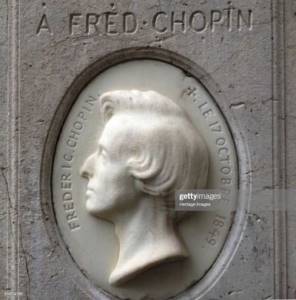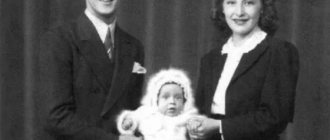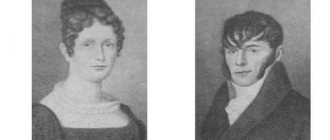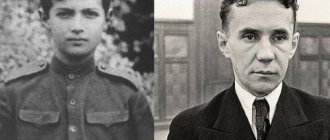- October 23, 2019
- Art
- Prekrasnaya Pysatelnytsa
Creative individuals play a significant role in our lives. These are composers, musicians, poets, artists, florists, photographers, designers, jewelers. They convey how these people see our world through their creations. The music of the remarkable composer Frederic Chopin, who lived and worked in the 19th century, is still extremely popular all over the world.
It has a positive effect on the subconscious, inspires, delights. Any of his works is a real masterpiece. Many people study the biography and work of Chopin. The most interesting information about the life of this person is offered in our article.
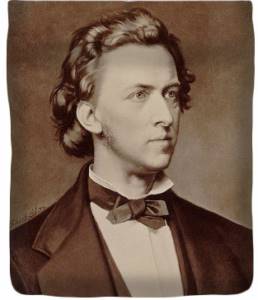
Family
Nicolas Chopin and Justyna Krzyzanowska are the parents of the great musician. His father comes from a simple family. He was born in France, but moved to Poland as a youth. Around 1802, Nicolas began working as a teacher for the children of Count Skarbek Zhelyazov-Volya. The composer's mother was from the Krzyzanowski family. Her family are impoverished nobles of the Swink coat of arms (Polish noble coat of arms). She became an orphan at an early age and was taken in by Skorbeki, of count origin. According to historical data, Justina spoke two languages - French and German, had ideal musical voice abilities, played the piano, and received a good education. It was from his mother that little Frederick inherited his talent for music.
The intelligence, integrity and good character of the parents played an important role in the family. Everyone there treated each other with love and respect. Frederick had three sisters. Each of them had versatile abilities. The eldest became a friend for the composer. Her name was Ludvika. The names of the younger sisters are Emilia and Isabella.
Childhood
The biography of Frederic Chopin began in the village of Zhelyazova-Wola. It was here that the future composer was born on March 1, 1810. 7 months after this event, the parents decided to move. Until the end of 1830, Frederick and his family lived in Warsaw.
By studying the biography and work of Chopin, fans of his talent will learn many interesting facts. As a little boy, he had a keen sense of everything connected with music, played the instrument masterfully, listened to every melody with enthusiasm, and could masterfully repeat it. At the age of seven, Frederic composed a short polonaise in G minor.
This event did not go unnoticed. The newspaper wrote about a talented boy. Many admired the fact that the kid had such a gift, he could play complex piano pieces and compose new, ingenious variations. Frederick surpassed all the famous composers of that time. His first music teacher was his mother, then the young Chopin was taught by pianist Wojciech Zywny. The lessons were difficult, but he managed. At the same time, Frederick studied at one of the Warsaw schools. By the age of twelve, the future composer had all the skills of a virtuoso pianist.
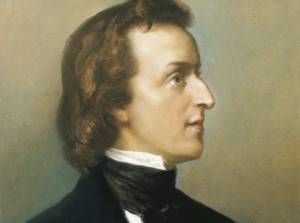
Chopin's early years
From an early age, Frederick was surrounded by live music. Her mother played the piano and sang, and her father accompanied her on the flute or violin. According to the recollections of the sisters, the boy showed a genuine interest in the sounds of music. At an early age, Chopin began to demonstrate artistic talent: he painted, wrote poetry, and performed pieces of music without any training. The gifted child began composing his own music, and at the age of seven, some of his early creations had already been published.
Six-year-old Chopin took regular piano lessons from the Czech pianist Wojciech Zivny, who was working as a private teacher at the time and was one of the teachers at his father’s school. Despite the feeling of some old-fashionedness and comedy created by the teacher, Wojciech taught the talented child to play the works of Bach and Mozart. Chopin never had another piano teacher. Lessons were given to him at the same time as his sister, with whom he played four hands.
In March 1817, Chopin's family, together with the Warsaw Lyceum, moved to the Kazimierz Palace, in the right wing. This year the audience heard his first compositions: Polonaise in B - flat major and military march. Over the years, the score of the first march was lost. A year later he was already performing publicly, playing works by Adalbert Girowiec.
In the same year, thanks to the efforts of the parish priest, the polonaise in E minor was published with a dedication to Victoria Skarbek. One of the first marches was performed by a military orchestra during military parades on Saxon Square. The Warsaw magazine publishes the first review of the work of the young talent, focusing on the fact that at the age of eight the author has all the components of a real musical genius. He not only easily performs the most complex pieces on the piano, but is also a composer with exceptional musical taste, who has already written several dances and variations that amaze even experts. On February 24, 2018, at a charity evening at the Radziwill Palace, Chopin plays. The public warmly welcomes the talented performer, calling him the second Mozart. He begins to actively perform in the best aristocratic houses.
Early years
After graduating from college, the brighter and more eventful life of the future composer begins. The biography of F. Chopin indicates that his musical abilities opened the doors to high society. He was noticed by influential people and was under the patronage of Prince Chetvertinsky and Prince Anton Radziwill. Young Chopin knew how to attract attention. He had a pleasant appearance, had an excellent sense of humor, and shone with wit. He could turn anyone's head, but he had a good disposition.
The young virtuoso began traveling around Europe. He attended concerts of popular musicians at that time, art galleries and opera houses. This did not interfere with his education: in 1823 he became a student at the Warsaw Lyceum, and three years later he entered the Higher School of Musicians.

Death of the Creator
By the end of the 40s, the composer gave concerts less and less often. After a tour to the UK, he finally fell ill with the disease.
In the last period of his life, the man did not get out of bed because he was very weak. The musician died on October 17, 1849. Almost reaching his fortieth birthday.
The cause of Frederic Chopin's death was complications of tuberculosis.
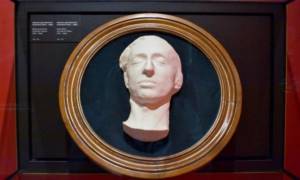
Chopin's Death Mask, Czartoryski Museum, Krakow
Life abroad
From the composer's biography you can learn that Chopin lived outside his homeland in his mature years. His heart yearned for Poland, for his beloved and native places. 1829 is a decisive year. At this time, he began his first large-scale tour. In November 1830 he left Poland forever.
Soon news of an uprising in Warsaw arrived. Frederick wanted to return to his homeland and take part in the battles, but this was not destined to happen. On the way to Poland, he learned that the uprising had been suppressed and its instigators had been arrested. Such bad news mentally wounded Chopin and affected his work. He had to stop in Stuttgart. Under the influence of the emotions that overwhelmed him, he wrote his famous “Stuttgart Diary”.
Despite the political instability, the young composer's success gained momentum. His first piano concert in Paris provided him with incredible popularity. He gained fans and influential friends. Women began to dream about him and tried to enter his life. Among his friends were Mendelssohn, Berlois, Liszt, Bellini, Schumann. He maintained friendship with these people for the rest of his life.
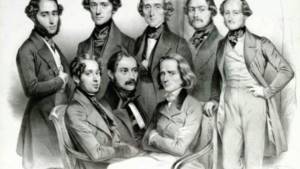
Another of Chopin's talents is his ability to teach. He loved to teach other people and treated each student with courtesy and understanding. He gave all of himself to this work. At first, among his students there were those who simply wanted to play the piano. But soon he began teaching famous musicians.
Musical career biography of Chopin
Since Frederic spent a lot of time studying as a child, by the age of 19 his career was already taking off successfully. Public concerts in his biography began with performances in Warsaw and Krakow. It was they who brought fame to the performer. A year later, Frederick went on a tour of Europe and never returned to his homeland.
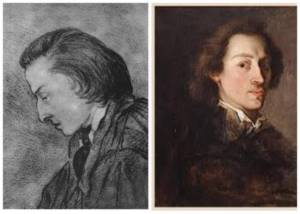
Chopin's biography states that he was a supporter of the uprising for Polish independence. While Frederick was living in Germany, he received news of the suppression of the uprising. Thus, the great composer was forced to stay abroad. Paris became the second home for the musician. The loud events shocked Frederick, and he wrote his first beautiful opus of sketches, the most famous of which was the Revolutionary Sketch.
Living in France, the great composer most often gave concerts in the homes of his patrons and aristocratic acquaintances. It was then that Frederick began composing piano concertos. He himself performed them in Vienna and Paris.
The turning point in Chopin's biography was his meeting with another composer, novelist Robert Schumann. The German was present at his concert and was so amazed that he exclaimed: “Gentlemen, it’s time to take off your hats, this is a genius.” Frederick's follower was his ardent admirer Franz Liszt, a Hungarian by birth. He was delighted with the musician’s work and decided to write about the life of his idol. The writer's research work was devoted to the work and life of Chopin.
Tragic love
Chopin's biography also contains a love story. The composer had feelings for the writer Georges Sand.
He loved her, but there were many negative aspects in their relationship. These two talented people were drawn to each other, but they never decided to start a family. Georges Sand was left with two children after her first marriage. There was little femininity or tenderness in her. But Chopin doted on her, she inspired him. Their relationship lasted about 10 years.
George Sand's children did not accept Chopin. Despite this, he lived in the same house with them. The unpleasant atmosphere in the family forced him to leave for Paris. But there was a lot there that reminded us of lost love.
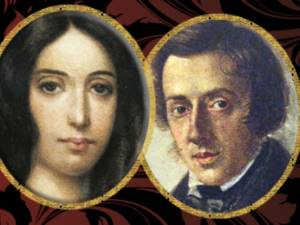
To heal his emotional wounds, he moved to London. His last concert took place there. Depression did not leave the composer, and his health deteriorated. He suffered from a lung disease (it is believed that it was tuberculosis). The damp London climate and constant nervous tension completely undermined his strength. On October 17, 1849, the great Chopin died. But even in our time, millions of people admire his talent.
Life and death in Paris
Over the next few years, Chopin performed widely in European countries, one of which was France. He settled in Paris in 1832 and quickly established friendly relations with young musical talents, among whom were: Liszt, Bellini and Mendelssohn. Nevertheless, longing for the Motherland made itself felt. Ardently wanting to take an active part in the political struggle of his people, he could not find a place for himself.
In France, he begins to work in earnest as a private piano teacher. Due to poor health, public appearances became less and less frequent. Nevertheless, he became a prominent figure in Parisian artistic circles. His entourage included musicians, writers and artists, as well as rich and talented women. In the spring of 1836, the disease worsened. Most likely, the lung disease that tormented the composer was rapidly developing tuberculosis.
At a party at the Countess's residence, Chopin first meets the 32-year-old writer Amandine Aurore Dudevant, known as George Sand. At the end of 1837, Sand developed a close relationship with Chopin, who by that time had separated from Maria Wodzinska. Hoping for the healing climate of Spain, Frederic, Georges and her children Maurice and Solange move to Mallorca.
In the villa, among cedars, cacti, oranges, lemons, aloe, figs, pomegranates, under a turquoise sky, by the azure sea, however, there was no improvement. Despite his illness, the composer completed his twenty-four preludes in Mallorca. In February they returned to France. By this time, bleeding began to appear during coughing attacks. After a course of treatment in Paris, the composer's condition improved. According to Sand's impressions, Chopin is so accustomed to having his head in the clouds that life or death means nothing to him and he is poorly aware of what planet he lives on. Georges, realizing the seriousness of her husband’s health issues, devoted her life to children, Chopin and creativity.
After improving their health, the family settled for the summer in the village house of Sand in the town of Nohant, south of Paris. Here Chopin composes the “Nocturne in G Major” and the three mazurkas from opus number 41. He is working on completing the “Ballad in F Major” and the sonata. In the summer he feels unstable, but at every opportunity he rushes to the piano and composes. The composer spends the entire next year with his family. Chopin gives five lessons a day, and his wife writes up to 10 pages a night. Thanks to his reputation and the development of his publishing business, Chopin successfully sells his scores. Rare Chopin concerts bring the family 5,000 francs. The public is eager to hear a great musician.
In 1843, the musician's health continued to deteriorate. He is taking homeopathic treatment. In October 1843, Frederic and his son Sand Maurice returned from the village to Paris, and his wife and daughter stayed for a month in nature. The death, at the age of fourteen in Vienna, in 1845 of his most talented student, Karl Filz, who was universally considered a brilliant pianist and closest in playing style, struck Chopin. The couple spends more and more time in the village. Among the regular guests is Pauline Viardot, whose repertoire Chopin listens to with delight.
Differences in temperament and jealousy interfered with the relationship with Sand. In 1848 they separated. Chopin toured the British Isles, performing for the last time on November 16, 1848 at a London guild for refugees from Poland. In letters to his family, he wrote that if London were not so dark, and the people were not so heavy, and if there were neither the smell of coal nor fogs, he would have learned English, but the English are very different from the French, to whom Chopin got attached. The Scottish fogs did not improve his health. At the beginning of 1849, his last works were published: “Waltz in minor” and “Mazurka in G minor”.
He returned to Paris, his health gradually deteriorating. Sometimes there are decent days when he travels in a carriage, but more often he is tormented by suffocating coughing attacks. He doesn't go out in the evenings. Nevertheless, he continues to give piano lessons.
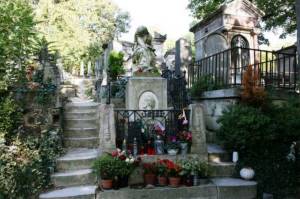
At two o'clock in the morning on October 17, 1849, at the age of 39, Chopin dies. Poland has lost its greatest musician, and the whole world has lost a true genius. His body was buried in the Père Lachaise cemetery in Paris, and his heart was taken to the Church of the Holy Cross in Poland, near Warsaw.
Places in Warsaw closely associated with the name of the composer:
- Saxon Palace;
- Kazimierz Palace;
- Botanical Garden;
- Krasiński Palace;
- Warsaw Lyceum;
- Conservatory;
- University of Warsaw;
- Radziwill Palace;
- Blue Palace;
- Morsztyn Palace;
- National Theatre.
Interesting facts from Chopin's biography
This brilliant man loved his homeland. He especially liked Polish folk music. He wrote a variety of piano pieces, sonatas, polonaises, waltzes, mazurkas, nocturnes, and preludes.
Many believe that he owns one of the simplest but incredibly popular plays, “The Dog Waltz.” Indeed, Chopin wrote a comic play, “Waltz of the Little Dog.” He was inspired by his beloved dog George Sand chasing his tail. However, this work has nothing to do with “The Dog Waltz”.
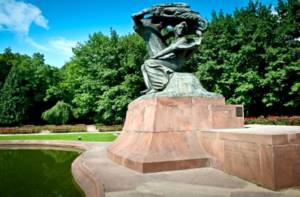
Chopin admired Mozart's work. He especially liked Requiem. This was the music that was played at his funeral. The great maestro wanted his heart to be transported to Poland. Chopin's will was fulfilled. His heart was walled up in a column of the Church of the Holy Cross in Warsaw.
Descendants honor his memory. A crater on Mercury was named after Chopin. There is a museum in Warsaw where you can get acquainted with his life and work. Also in this city, the airport is named after Chopin. Monuments to the great composer have been erected in various cities of Poland.
The appearance of a genius - for the 210th anniversary of the birth of Fryderyk Chopin
For all the brightness of his romantic experience, Chopin did not like to be called a “romantic.” The concept of “romanticism” was associated with excessive figurativeness and posing. All this disgusted him
Telegram Twitter Youtube Instagram Zen rss
Fryderyk Chopin
ChopinFrederick

Image: Maria Lapukhina © IA Krasnaya Vesna
210 years ago, on March 1, 1810, in the village of Zelazowa Wola near Warsaw, one of the greatest musical geniuses of mankind, Fryderyk Chopin, was born. The date of February 22 is indicated on his birth and baptism certificates, but his family always celebrated his birthday on March 1. And in the composer’s homeland this date is still celebrated.
Having lived only 39 years, Chopin gave people an inexhaustible source of beauty, consolation and joy. Franz Liszt called him “the gentle genius of harmony.” “He is and will remain the bravest and proudest poetic spirit of the age,” wrote Robert Schumann.
Sergei Rachmaninov spoke of him as “the greatest of giants.” A huge number of books, articles, and memoirs have been written about Chopin. There is no need to talk about countless scientific works on the history and theory of music.
For pianists, Chopin's legacy has become a cornerstone. When the old forte piano - the brainchild of the 18th century - began to turn into a modern grand piano, it was Chopin who created what can be called, without exaggeration, the New Testament of piano art, its core and encyclopedia, both in technical and figurative and expressive terms.
We propose to celebrate today’s anniversary not only by remembering his music, but also by looking at several of his lifetime images.
Before us is a pencil drawing made in 1826 by Princess Eliza Radziwill. Chopin is 16 years old. He is already an outstanding piano player and a celebrity in Warsaw. He has been composing music since early childhood. The fair-haired young man is a favorite of the ladies, but all his thoughts are focused on the piano. His soul merges with the instrument, to which he devotes all his creativity, writing only a few works with the participation of other instruments (and none without his participation).
1. Chopin at the piano. Drawing by Eliza Radziwill, 1826
1826Radziwill, ElizaDrawing of a piano.for Chopin1.
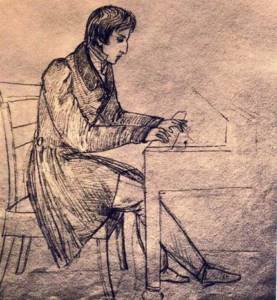
The first pictorial portrait of the composer was created in 1829 by Ambrosie Mieroszewski. Unfortunately, only a black and white reproduction has survived; the original disappeared in 1939 during the German occupation.
All his life, Chopin was a welcome guest in aristocratic salons - sophisticated, well-mannered, endowed with a brilliant mind and an excellent sense of humor. However, in this portrait the artist may have tried to capture other features - youthful freshness, simplicity and at the same time a certain inwardness. At the age of 19–20, Chopin was in a state of great creative enthusiasm, producing his first masterpieces - two piano concertos, several nocturnes, mazurkas, and etudes. Bravura and virtuosity in them are subordinated to a sincere and reverent expression of feelings, the music is simply fragrant with spiritual dreaminess, and the Polish folk songs and dances he loved from childhood have already been melted into high poetry.
2. Portrait by Ambrosy Meroshevsky, 1829
1829Meroshevsky, AmbrosiaworkPortrait2.
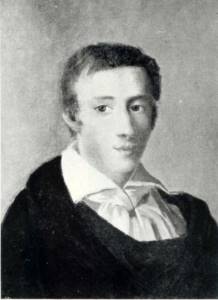
The year 1831 was a turning point in Chopin's life. To continue his creative career, and also due to the suppression of the Polish uprising against the Russian Empire, the young composer was forced to emigrate to his father’s homeland - France. The rest of his life was connected with Paris, which began to establish itself as the European capital of the arts. Here he will become an idol of high society, establish himself as a major pianist and teacher, along with Franz Liszt, and become friends with many outstanding musicians, artists, poets and writers.
Here are a few typically secular portraits that capture the appearance of a refined regular at aristocratic salons:
3. Chopin in 1835/36 Watercolor by Maria Wodzinska (the composer's fiancée in those years) 4. Portrait by Theofil Kwiatkowski (c. 1843) 5. Portrait by Ary Schaeffer (1847)
(1847) SchefferAriwork Portrait 5.1843 (c. Kwiatkowski Theophilus workPortrait 4.composer) bride (in Wodzinska Maria Watercolor 1835/36 in Chopin 3.
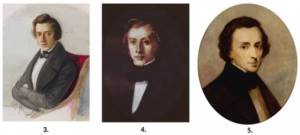
In society, Chopin showed himself as a model of courtesy, restraint and impeccable taste. But what was he like deep down? The famous portrait of Eugene Delacroix will help to lift the veil, in which Chopin is depicted suffering, courageous, self-absorbed, as if he had comprehended something painful and sublime. After all, his music became like this, in many works - in ballads, in the scherzo, the second sonata, etc. - reaching the utmost tragedy, sometimes to the point of looking into the very abyss of human existence.
6. Eugene Delacroix - Portrait of F. Chopin (1838, unfinished work)
work) unfinished (1838, ChopinPortrait of F. Delacroix - Eugene6.
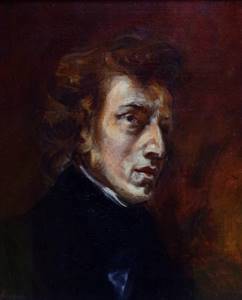
For all the brightness of his romantic experience, Chopin did not like to be called a “romantic.” He considered himself a continuator of the art of the “classics,” that is, the old masters - Bach, Mozart, Beethoven (although he did not accept the latter in everything). The concept of “romanticism” was associated with excess, with “excesses,” with excessive figurativeness, and finally with posing. All this disgusted him. Subjectivity and sophistication never turned into narcissism. The most violent impulses fit into classically perfect and balanced forms, despite the fact that the range of emotional states expressed by Chopin is unusually wide - from overflowing happiness and jubilation to extreme despair, from rebellion to pacification, from naive carelessness to heroic determination.
Chopin said: “Simplicity is the highest goal, achievable when you have overcome all difficulties.” And again: “There is nothing more disgusting than music without hidden meaning.”
Wasn't he himself a man of hidden meaning? Behind the elegance hid vulnerability, behind the restraint - will and courage. Indeed, even in purely musical terms, his phenomenal mastery of the craft, comparable to the skill of Bach or Mozart, is nowhere evident. The music flows with amazing naturalness and spontaneity, and the wonders of compositional technique are visible only to specialists.
Now let’s supplement our gallery with the most valuable photographic portraits of the musician. In total, three such images are known to date. All of them were made using the daguerreotype technique, but the original plates, unfortunately, have not survived. The portraits have come to us in the form of photographic copies of the original. The earliest image dates from the mid-1840s:
7. Copy of a daguerreotype from the mid-1840s
1840s mid-agerotypeCopy7.
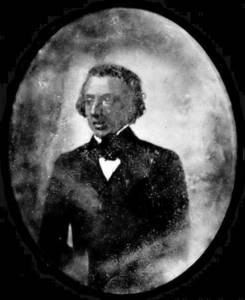
The well-preserved image, which has become widely known, was made in the Parisian workshop of Louis-Auguste Bisson, most likely in 1847. Before us appears a composer, exhausted by life’s troubles and lung disease. The same face of a deeply worried, but restrained person with a slightly questioning look, coming as if from somewhere deep.
8. Copy of a daguerreotype by Louis-Auguste Bisson (1847?)
(1847?)BissonLouis-Augustad gerotypeCopy8.
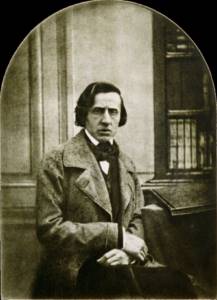
And finally, an absolutely stunning portrait, discovered quite recently, in 2021, by Swiss physicist Alain Kohler, in the form of a photographic copy kept at the home of a certain music lover. Analysis of the image left no doubt about the authenticity of the image. The clichés dated back to around 1847. The author was probably the same Louis-Auguste Bisson, judging by the identity of some background elements.
Without saying a word, just look at this face.
9. Copy of a daguerreotype (presumably L.-O. Bisson, 1847)
1847) Bisson, L.-O. (presumably daguerreotype Copy 9.
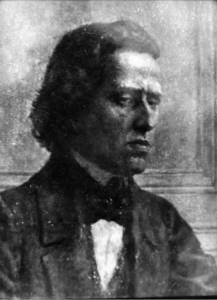
F. Chopin - Prelude No. 8 from cycle 24 Preludes op. 28. Sp. Arthur Rubinstein, 1946. 10. Medallion on Chopin’s grave in the Père Lachaise cemetery in Paris, made from a death mask
death mask made in Paris, in Père-Lachaise, cemetery, Chopin grave, Medallion 10.
